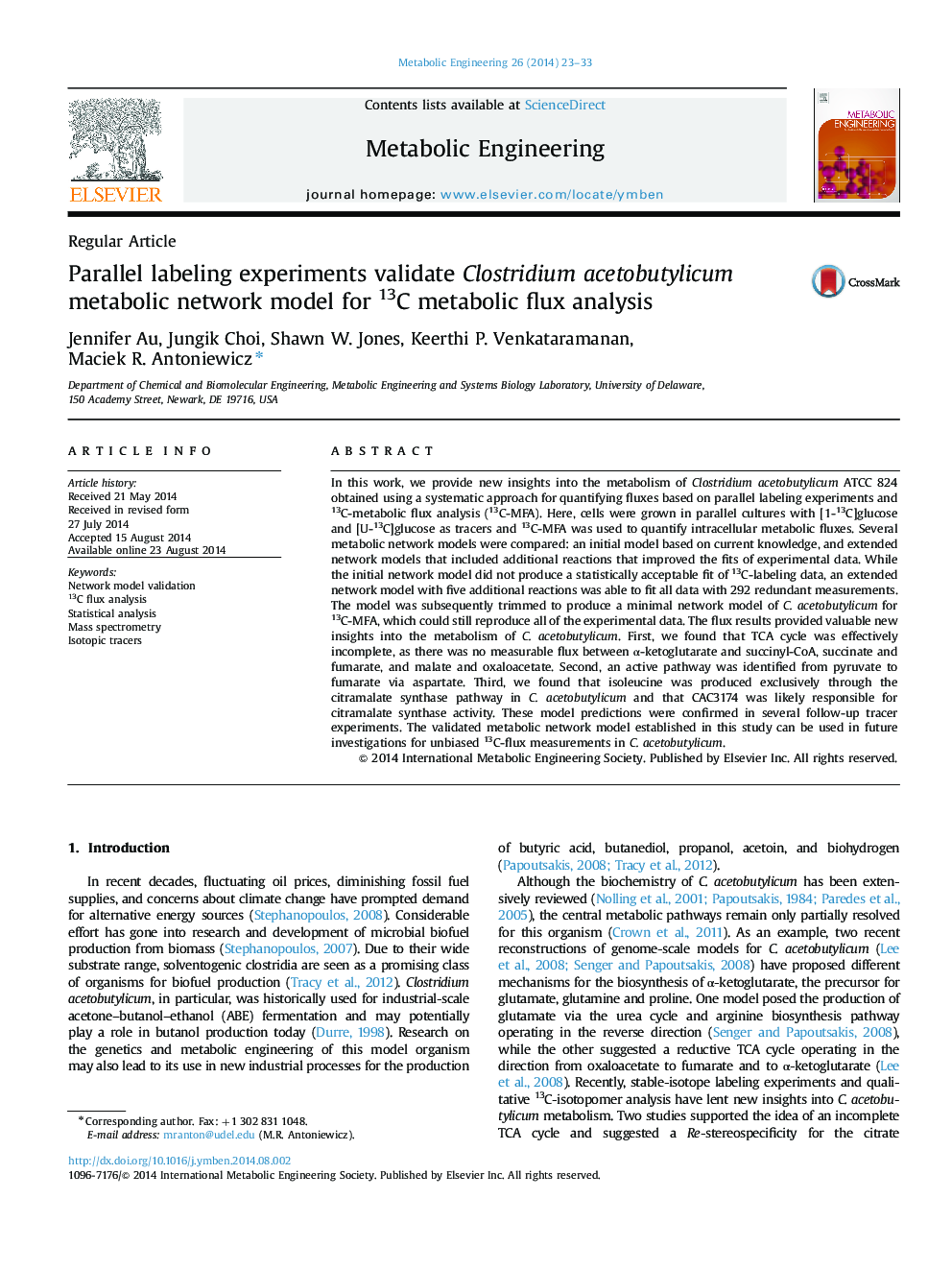| Article ID | Journal | Published Year | Pages | File Type |
|---|---|---|---|---|
| 6494524 | Metabolic Engineering | 2014 | 11 Pages |
Abstract
In this work, we provide new insights into the metabolism of Clostridium acetobutylicum ATCC 824 obtained using a systematic approach for quantifying fluxes based on parallel labeling experiments and 13C-metabolic flux analysis (13C-MFA). Here, cells were grown in parallel cultures with [1-13C]glucose and [U-13C]glucose as tracers and 13C-MFA was used to quantify intracellular metabolic fluxes. Several metabolic network models were compared: an initial model based on current knowledge, and extended network models that included additional reactions that improved the fits of experimental data. While the initial network model did not produce a statistically acceptable fit of 13C-labeling data, an extended network model with five additional reactions was able to fit all data with 292 redundant measurements. The model was subsequently trimmed to produce a minimal network model of C. acetobutylicum for 13C-MFA, which could still reproduce all of the experimental data. The flux results provided valuable new insights into the metabolism of C. acetobutylicum. First, we found that TCA cycle was effectively incomplete, as there was no measurable flux between α-ketoglutarate and succinyl-CoA, succinate and fumarate, and malate and oxaloacetate. Second, an active pathway was identified from pyruvate to fumarate via aspartate. Third, we found that isoleucine was produced exclusively through the citramalate synthase pathway in C. acetobutylicum and that CAC3174 was likely responsible for citramalate synthase activity. These model predictions were confirmed in several follow-up tracer experiments. The validated metabolic network model established in this study can be used in future investigations for unbiased 13C-flux measurements in C. acetobutylicum.
Related Topics
Physical Sciences and Engineering
Chemical Engineering
Bioengineering
Authors
Jennifer Au, Jungik Choi, Shawn W. Jones, Keerthi P. Venkataramanan, Maciek R. Antoniewicz,
